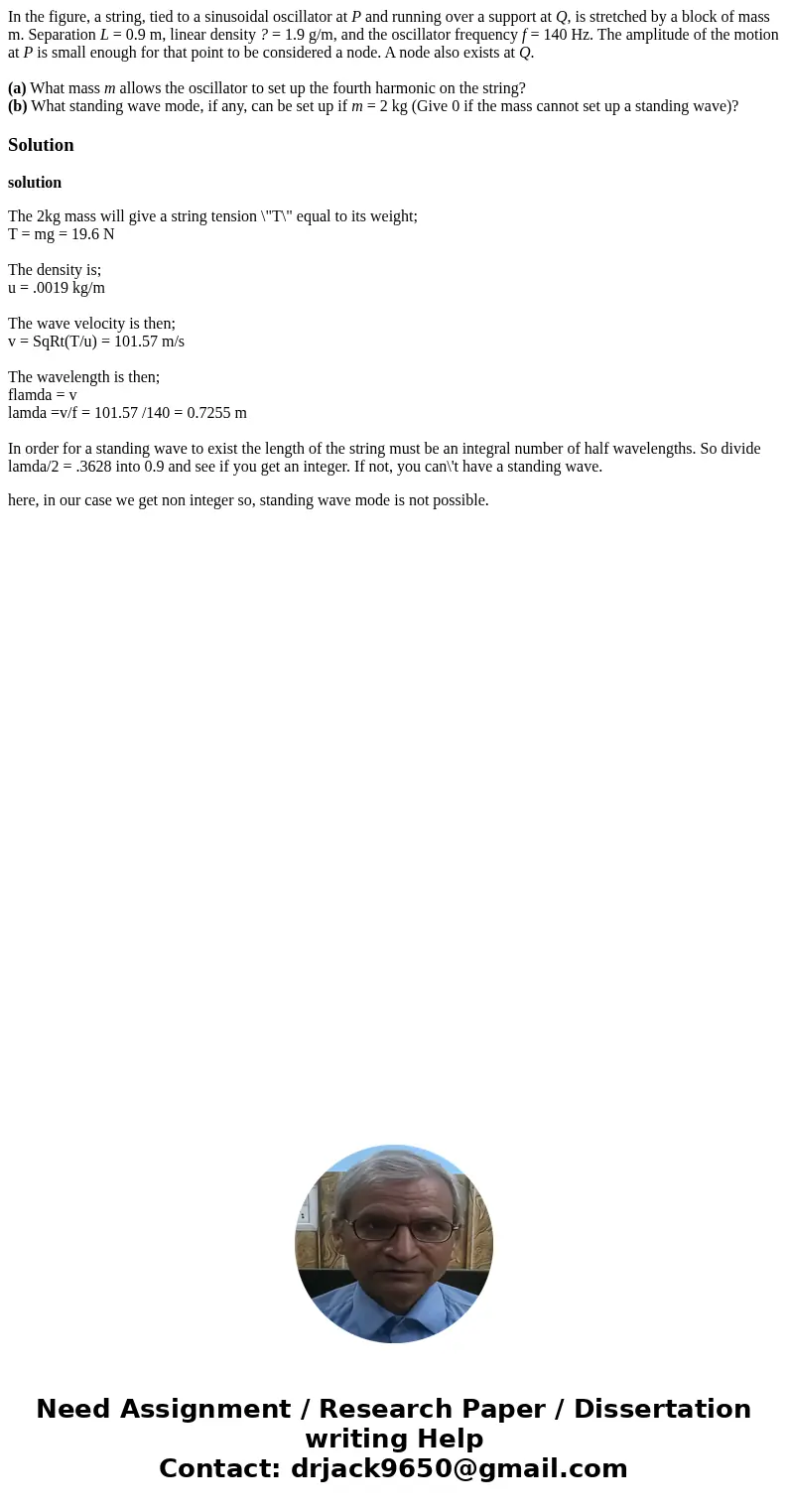In the figure a string tied to a sinusoidal oscillator at P
In the figure, a string, tied to a sinusoidal oscillator at P and running over a support at Q, is stretched by a block of mass m. Separation L = 0.9 m, linear density ? = 1.9 g/m, and the oscillator frequency f = 140 Hz. The amplitude of the motion at P is small enough for that point to be considered a node. A node also exists at Q.
(a) What mass m allows the oscillator to set up the fourth harmonic on the string?
(b) What standing wave mode, if any, can be set up if m = 2 kg (Give 0 if the mass cannot set up a standing wave)?
Solution
solution
The 2kg mass will give a string tension \"T\" equal to its weight;
T = mg = 19.6 N
The density is;
u = .0019 kg/m
The wave velocity is then;
v = SqRt(T/u) = 101.57 m/s
The wavelength is then;
flamda = v
lamda =v/f = 101.57 /140 = 0.7255 m
In order for a standing wave to exist the length of the string must be an integral number of half wavelengths. So divide lamda/2 = .3628 into 0.9 and see if you get an integer. If not, you can\'t have a standing wave.
here, in our case we get non integer so, standing wave mode is not possible.

 Homework Sourse
Homework Sourse